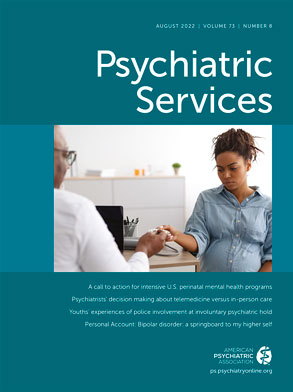The collaborative care model (CoCM), or the integration of behavioral health and general medical services, improves access to and engagement in depression and anxiety treatment in primary care. However, implementation of CoCM among low-income and racial-ethnic minority patient populations remains limited. Recently, Blackmore et al. (
1) found low engagement rates in CoCM in a sample of patients with depression and anxiety who were predominantly low income and from racial-ethnic minority groups. Less than half of eligible patients received a minimally adequate treatment dose, and despite clinicians’ significant efforts, retention was low. Blackmore et al. called for researchers to “identify and overcome barriers to engaging vulnerable patients and advance the model’s impact” and to make immediate “CoCM modifications and improvements” to increase CoCM’s accessibility and effectiveness.
Blackmore et al.’s (
1) findings are sobering and echo decades of recorded disparities among low-income and racial-ethnic minority groups. Despite having higher rates of depression and anxiety, persons in these groups still have less access to any care, let alone evidence-based, culturally informed, integrated care, compared with majority populations. There is an urgent need to close the disparity gap by improving access to, engagement in, and quality of integrated primary care in the United States. Although CoCM generally focuses on a
clinician-system intervention strategy to increase collaboration between clinicians in different parts of the system, we argue that enhancing treatment engagement requires collaboration with the patient. Research on treatment engagement calls for a range of concrete (i.e., knowledge, skills) and abstract (power; trust) supports for optimal patient engagement. This is particularly salient for disadvantaged U.S. populations, who are more likely to receive ineffective or harmful care, understandably eroding individuals’ trust and willingness to engage in future care regardless of its promise.
Patient-clinician and
patient-system strategies that include patients in all aspects of the care process present opportunities to improve access to, engagement in, and quality of care and to support CoCM aims.
Shared decision making (SDM) is a health communication model that uses a patient-clinician strategy to improve outcomes concerning access to and engagement in care. Unlike the CoCM, common SDM tools and interventions focus on dyadic decisions between patient and provider. SDM is particularly applicable for primary care treatment of depression and anxiety because many individuals experiencing these symptoms initially present to primary care providers and because there are multiple efficacious treatments to discuss. However, similar to CoCM, with SDM disparities exist in usability, accessibility, and effectiveness for patients from racial-ethnic minority groups. Most SDM depression studies, particularly those finding SDM to be effective, were conducted with predominantly White samples, many outside of the United States, making current SDM interventions, tools, and practices far less responsive to the needs and preferences of U.S. low-income and racial-ethnic minority groups.
Collaborative decision making (CDM) is a patient-clinician and patient-system model to empower patients in all aspects of health decision making and align decisions with patient preferences, goals, and values. CDM facilitates integration of unique considerations of the patient’s identity and the local system context. CDM has shown promise for low-income veterans and civilians with serious mental illness, with ongoing efforts to examine benefits and tailored strategies for veterans from racial-ethnic minority groups. However, CDM has not yet expanded to decreasing racial-ethnic disparities in primary care.
To begin addressing disparities in depression and anxiety care, patient voice must be centered in engagement strategies and in research about those strategies. SDM and CDM are promising models for integration with CoCM to increase patients’ voice and engagement in care. However, integration of CoCM, SDM, and CDM is not enough; we must also address disparities in these engagement models. Without a thorough understanding of patients’ sociocultural experiences and preferences, and their influence on current engagement strategies, these three models are likely misaligned with patient values and therefore doomed to failure.

